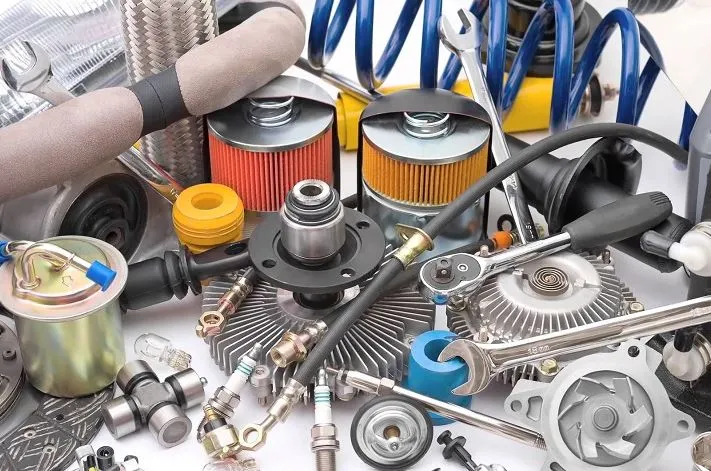Through the years, cars have seen vast changes, evolving from basic, boxy designs into sleek futuristic ones that draw your eye and leave you gasping at their futuristic features. These changes in car design have reflected major cultural and technological shifts.
After World War II, automobile designers developed vehicles with features designed to increase both passenger and driver safety. Streamlining was widely popular as were chrome accents and fins.
1. Aerodynamic and futuristic
Car design is a challenging field that demands expertise in engineering, safety, business acumen and creativity. Car designers work tirelessly to perfect existing design mechanics while meeting consumer expectations for style and functionality.
Over time, car design has evolved to keep pace with technological advancements to maximize performance and aerodynamics. A significant change occurred with the invention of internal combustion engines allowing vehicles to travel faster and further than before; as a result automotive designers began adopting more streamlined designs into their vehicles.
After World War II, car designers incorporated tailfins into their vehicles in order to give them a sleek and aerodynamic appearance. After this trend was followed by space age influences which caused car designers to design more futuristic vehicles with unconventional shapes and sharp angles.
As technology develops, car designs may continue to become sleeker and aerodynamic while providing consumers with ample choices. This could create two-tier markets where some manufacturers provide uniform products while others create one-off designs tailored for luxury consumers.
2. Smarter and more connected
After World War II, the automotive industry started shifting focus from engine performance and car design towards other aspects. The 1980s witnessed hatchbacks and turbocharging becoming popular while curved lines experienced something of a comeback. Automotive designers also started using lighter materials in order to increase fuel efficiency and enhance safety.
Today’s automotive industry is focused on electric and autonomous vehicles. Additionally, more comfortable cabins with cutting-edge features have emerged that offer enhanced user experiences. OEMs are investing heavily in innovative technologies and materials in response to these trends.
Future cars will likely become smarter and more connected, equipped with internet access and various sensors that interact with one another for improved efficiency and safety. This trend, known as CASE (Connected Autonomous Shared Electrified), could transform efficiency and safety. But this technology may raise some ethical considerations as owners may question ownership and privacy rights surrounding future models being designed. Automotive designers should keep these issues in mind when developing future designs.
3. Embedded finance
Embedded finance has emerged as an alternative approach for businesses to offer financial services. Utilizing API-first technologies, numerous banking service and software providers have emerged that integrate financial products such as payment processing, lending, invoice financing, credit scoring, insurance and investment into non-financial businesses seamlessly.
The value of embedded finance is expected to increase rapidly by 2023 as its implementation reduces customer costs while improving convenience and access to financial services, which should lead to increased customer loyalty as well as unlock new use cases that maximize revenue and drive growth on platforms.
Klarna offers buy now, pay later (BNPL) financing service for online retailers while Lyft provides its riders with a prepaid payment option to prepay rides before they take place – this represents a dramatic departure from traditional financial products which were pushed out rather than available when needed. In the B2B market, startups provide various embedded financial solutions to help streamline financial processes ranging from payments, trade credit financing and invoice financing solutions.
4. Adaptive AI
As technology develops, cars have become more adaptive to changes in their environment. One form of Artificial Intelligence known as Adaptive Machine Learning allows intelligent systems to learn from experience. Furthermore, its highly flexible nature means it can adapt its algorithms and processes accordingly in any given circumstance.
Adaptive AI has many applications across industries. Financial institutions rely heavily on it to detect fraud and optimize loan applications; while it has also become popularly utilized by e-commerce retailers to personalize shopping experiences for users and recommend products.
Artificial intelligence (AI) is increasingly being employed by car manufacturers to streamline production processes and achieve sustainability goals. A prime example is the Danish Safety Technology Authority tool using artificial intelligence to monitor the safety of automotive parts and components across Europe. AI quickly locates any pertinent details for each product as well as their manufacturer – expediting the process of identifying and responding to potential safety issues more rapidly.
5. Sustainable technology
The automotive industry has evolved tremendously over time, from boxy designs to futuristic vehicles with sleek designs that look as great as they drive. These design trends represent part of a larger trend towards sustainable innovation that’s expected to continue through 2023.
Car design has long been driven by technological innovations and changing consumer demand. Following World War II, monocoque technology transformed car shapes dramatically and put engineering at the center of design decisions. Engineers began favoring uncluttered appearances over 2-color paint jobs – evidenced by 1948 Cadillac tail fins and 1951 Le Sabre’s wraparound windshield which symbolized postwar optimism and prosperity.
In the 1920s, American automobile market saturation reached critical mass. To stay relevant in the marketplace, General Motors Corporation head Alfred P. Sloan initiated annual model-year design changes — often called planned obsolescence by critics — which critics widely perceived as planned obsolescence. Subsequently, styling and engineering diverged as designers struggled to balance aesthetically pleasing intent with market forces, cost and performance requirements – leading to decades-long design cycles.




